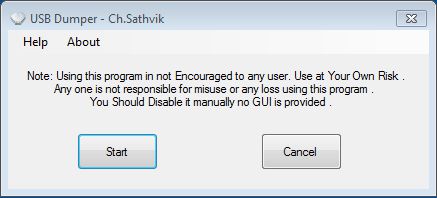

- #USB DUMPER FOR MAC HOW TO#
- #USB DUMPER FOR MAC ARCHIVE#
- #USB DUMPER FOR MAC CODE#
- #USB DUMPER FOR MAC DOWNLOAD#
- #USB DUMPER FOR MAC FREE#
They may be under one of many free licenses, in the public domain, believed to be fair use, or even copyright infringements (which should be deleted). Unlike most article text, images are not necessarily licensed under the GFDL & CC-BY-SA-3.0. The API Etiquette page contains some guidelines, although not all of them apply (for example, because isn't MediaWiki, there is no maxlag parameter). You should be getting checksums from the mediawiki API and verifying them. In any case, make sure you have an accurate user agent string with contact info (email address) so ops can contact you if there's an issue.

You should rsync from the mirror, then fill in the missing images from when downloading from you should throttle yourself to 1 cache miss per second (you can check headers on a response to see if was a hit or miss and then back off when you get a miss) and you shouldn't use more than one or two simultaneous HTTP connections.
#USB DUMPER FOR MAC DOWNLOAD#
Bulk download is (as of September 2013) available from mirrors but not offered directly from Wikimedia servers. Images and other uploaded media are available from mirrors in addition to being served directly from Wikimedia servers. Where are the uploaded files (image, audio, video, etc.)? These dumps are also available from the Internet Archive. simple, nostalgia) exist, with the same structure.
#USB DUMPER FOR MAC CODE#
The sub-directories are named for the language code and the appropriate project. org directory you will find the latest SQL and XML dumps for the projects, not just English.
#USB DUMPER FOR MAC HOW TO#
See for info about such multistream files and about how to decompress them with python see also and related files for an old working toy. You could then either bzip2 decompress it or use bzip2recover, and search the first file for the article ID.
#USB DUMPER FOR MAC ARCHIVE#
The first field of this index is the number of bytes to seek into the compressed archive 2, the second is the article ID, the third the article title.Ĭut a small part out of the archive with dd using the byte offset as found in the index. Each separate 'stream' (or really, file) in the multistream dump contains 100 pages, except possibly the last one.įor multistream, you can get an index file, 2. NOTE THAT the multistream dump file contains multiple bz2 'streams' (bz2 header, body, footer) concatenated together into one file, in contrast to the vanilla file which contains one stream. And it will unpack to ~5-10 times its original size.

You might be tempted to get the smaller non-multistream archive, but this will be useless if you don't unpack it. The only downside to multistream is that it is marginally larger. Your reader should handle this for you, if your reader doesn't support it it will work anyway since multistream and non-multistream contain the same xml. But with multistream, it is possible to get an article from the archive without unpacking the whole thing. So if you unpack either, you get the same data. 2 and 2 both contain the same xml contents. GET THE MULTISTREAM VERSION! (and the corresponding index file, 2)


 0 kommentar(er)
0 kommentar(er)
